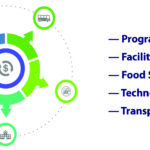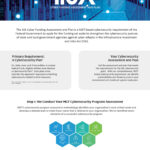Jefferson County, Colorado officials were managing various federal and state programs that included numerous health and human services programs. They were also operating various funds, programs, and activities outside of the General Fund such as districts, enterprise funds, internal service funds, and special revenue funds. The State of Colorado reimburses a large portion of the direct costs associated with these programs and also reimburses a portion of the centralized indirect costs associated with programs such as accounting, human resources, and information technology. To capture these costs, Jefferson County brought in MGT to provide a cost allocation plan to help ensure they were being reimbursed in full for all eligible costs. The following objectives were included for the annual work plan:
- Prepare an annual OMB A-87 compliant cost allocation plan subject to state and federal audit and approval.
- Prepare an annual Full Cost (GAAP) allocation plan subject to internal and external audit and approval.
- Defend and negotiate as required the annual OMB A-87 cost allocation plan with state and federal officials.
- Provide education, assistance, and support to County personnel.
By utilizing a proven methodology that has been reviewed and accepted by state agencies, federal cognizant agencies, internal auditors, and external auditors in multiple states, MGT experts applied OMB Circular A-87 and GAAP principles into a systematic, yet flexible, multi-step approach to raise the accuracy and acceptance of cost allocation plan results. Since enlisting MGT’s assistance, Jefferson County has maximized appropriate indirect cost reimbursements from both cost allocation plans within internal and external deadlines. These reimbursements represent a significant and measurable revenue source for the General Fund. Additionally, the Full Cost allocation plan was applied to the County’s annual budget process to help identify the true cost of operating every department, division, and program.
Jefferson County, Colorado officials were managing various federal and state programs that included numerous health and human services programs. They were also operating various funds, programs, and activities outside of the General Fund such as districts, enterprise funds, internal service funds, and special revenue funds. The State of Colorado reimburses a large portion of the direct costs associated with these programs and also reimburses a portion of the centralized indirect costs associated with programs such as accounting, human resources, and information technology. To capture these costs, Jefferson County brought in MGT to provide a cost allocation plan to help ensure they were being reimbursed in full for all eligible costs. The following objectives were included for the annual work plan:
- Prepare an annual OMB A-87 compliant cost allocation plan subject to state and federal audit and approval.
- Prepare an annual Full Cost (GAAP) allocation plan subject to internal and external audit and approval.
- Defend and negotiate as required the annual OMB A-87 cost allocation plan with state and federal officials.
- Provide education, assistance, and support to County personnel.
By utilizing a proven methodology that has been reviewed and accepted by state agencies, federal cognizant agencies, internal auditors, and external auditors in multiple states, MGT experts applied OMB Circular A-87 and GAAP principles into a systematic, yet flexible, multi-step approach to raise the accuracy and acceptance of cost allocation plan results. Since enlisting MGT’s assistance, Jefferson County has maximized appropriate indirect cost reimbursements from both cost allocation plans within internal and external deadlines. These reimbursements represent a significant and measurable revenue source for the General Fund. Additionally, the Full Cost allocation plan was applied to the County’s annual budget process to help identify the true cost of operating every department, division, and program.










